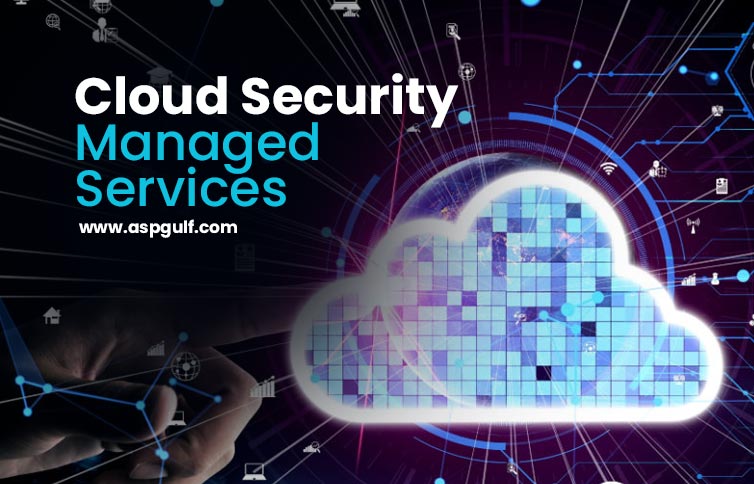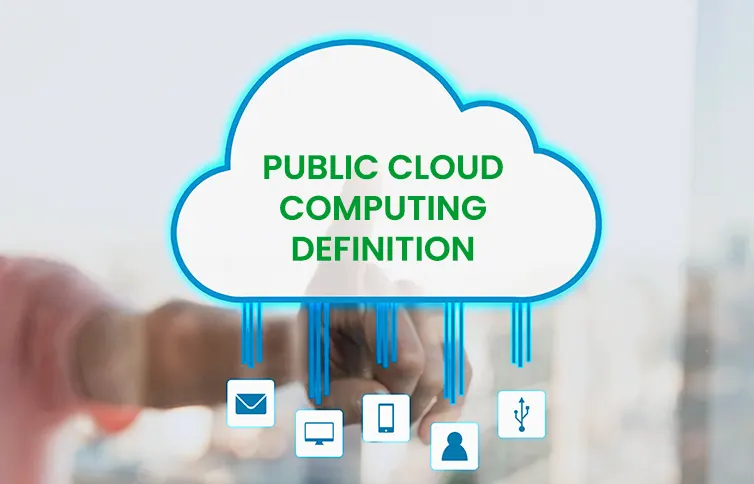Introduction
In today’s rapidly evolving technological landscape, businesses face a crucial decision when it comes to their IT infrastructure: should they opt for cloud-based solutions or stick with traditional on-premises systems? This question has become increasingly important as organizations strive to optimize their operations, reduce costs, and stay competitive in the digital age.
As an IT professional, IT manager, procurement specialist, or business owner, you’re likely grappling with this very question. The choice between cloud and on-premises managed solutions can significantly impact your organization’s efficiency, security, and bottom line. In this comprehensive guide, we’ll explore the pros and cons of both options, helping you make an informed decision that aligns with your business needs and goals. Let’s dive into the understanding of on-premise vs cloud solutions.
Understanding Cloud Computing and On-Premises Systems
Before we dive into the comparison, let’s briefly define these two approaches to IT infrastructure:
Cloud Computing
Cloud computing refers to the delivery of computing services – including servers, storage, databases, networking, software, analytics, and intelligence – over the Internet (“the cloud”). Instead of owning and maintaining physical hardware and data centers, organizations can access these resources on-demand from cloud service providers.
On-Premises Computing
On-premises (or on-prem) computing involves deploying and maintaining IT infrastructure within an organization’s physical location. For businesses wondering, is cloud best choice vs on prem cloud, this traditional approach requires them to purchase, set up, and manage their own hardware, software, and networking equipment.
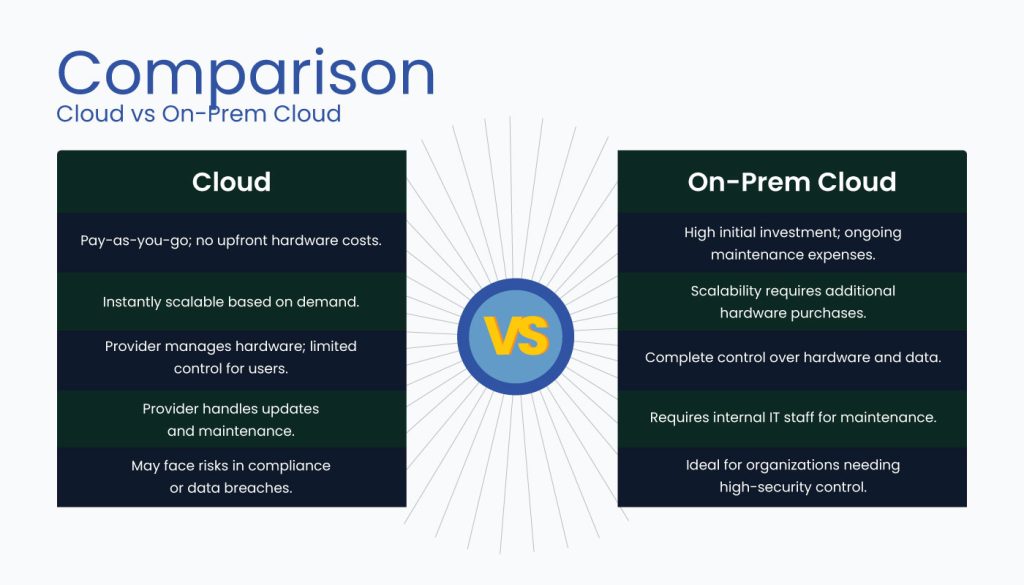
Key Factors to Consider: On-Premise vs. Cloud Solutions
1. Cost Considerations
One of the most significant factors in the Cloud Solutions vs On-Premise debate is cost. Let’s break down the financial implications of each approach:
Cloud Costs
- Pay-as-you-go model
- Reduced upfront capital expenditure
- Predictable operational expenses
- Potential for cloud hosting cost optimization through scalability
On-Premises Costs
- High initial investment in hardware and software
- Ongoing maintenance and upgrade costs
- Power and cooling expenses
- Potential for underutilized resources
“While cloud solutions often appear more cost-effective due to their pay-as-you-go model, it’s essential to conduct a thorough cost analysis based on your specific usage patterns and long-term needs to determine if cloud is the best choice vs on-prem cloud.”
2. Scalability and Flexibility
The ability to adapt to changing business needs is crucial in today’s fast-paced environment. Here’s how cloud and on-premises solutions compare in terms of scalability:
Cloud Scalability
- Rapid scaling up or down based on demand
- Easy addition of new services or features
- Geographic expansion without physical infrastructure investments
On-Premises Scalability
- Limited by physical hardware capacity
- Scaling requires purchasing and deploying new equipment
- Potential for overprovisioning to accommodate future growth
3. Security and Compliance
Data security and regulatory compliance are top priorities for any organization. Both cloud and on-premises solutions offer different approaches to protecting sensitive information:
Cloud Security
- Managed security services from cloud providers
- Regular cloud security management, updates and patches
- Shared responsibility model for security
On-Premises Security
- Full control over security measures
- Physical access control to servers
- Customized security policies and implementations
“While cloud providers invest heavily in security, some organizations may prefer the control offered by on-premises solutions, especially in highly regulated industries. However, they often question whether is cloud best choice vs on prem cloud in terms of compliance and data governance.”
4. Performance and Reliability
The performance and reliability of your IT infrastructure can directly impact your business operations. Let’s compare how cloud and on-premises solutions stack up:
Cloud Performance
- High availability and redundancy
- Distributed infrastructure for improved performance
- Potential latency issues for certain applications
On-Premises Performance
- Direct control over hardware and network configurations
- Predictable performance for local applications
- Potential single points of failure
5. Customization and Control
The level of customization and control you require can be a deciding factor in choosing between cloud and on-premises solutions:
Cloud Customization
- Limited hardware-level customization
- Extensive software and service customization options
- Vendor lock-in concerns

Cloud Hosting
Cloud Hosting – Scalable, Secure, and Cost-Effective! Get Started Today!
On-Premises Customization
- Complete control over hardware and software configurations
- Ability to tailor solutions to specific business needs
- Freedom to choose and integrate various technologies
Real-World Scenarios: Cloud vs On-Premises
To better understand how these factors play out in practice, let’s examine a few real-world scenarios:
Scenario 1: Small Business with Fluctuating Demands
A small e-commerce business experiences seasonal spikes in traffic and sales. During peak periods, their website needs to handle significantly higher loads.
Cloud Solution: The business opts for a cloud-based infrastructure, allowing them to easily scale resources up during busy seasons and scale down during quieter periods. This approach helps them manage costs effectively while ensuring their website remains responsive during high-traffic periods.
On-Premises Solution: If the business chose an on-premises solution, they would need to invest in hardware capable of handling peak loads, which would be underutilized during off-peak times. This raises the question—is cloud best choice vs on prem cloud—as on-premises solutions could lead to higher upfront costs and inefficient resource usage.
Scenario 2: Large Enterprise with Strict Compliance Requirements
A multinational financial institution deals with sensitive customer data and must adhere to strict regulatory requirements across multiple jurisdictions.
On-Premises Solution: The company maintains an on-premises infrastructure to have complete control over data storage, access, and security measures. This allows them to implement customized security protocols and ensure compliance with various regional regulations.
Cloud Solution: While some cloud providers offer compliance-focused solutions, the company may face challenges in ensuring consistent compliance across different geographic regions and may have concerns about data sovereignty.
Scenario 3: Medium-Sized Business with Legacy Applications
A manufacturing company relies on several legacy applications that are critical to their operations but are not easily migrated to the cloud.
Hybrid Solution: The company adopts a hybrid approach, keeping their legacy applications on-premises while moving other services to the cloud. This allows them to maintain control over their critical systems while benefiting from the scalability and cost-effectiveness of cloud solutions for other aspects of their IT infrastructure.
Advantages and Disadvantages: A Quick Summary
Let’s recap the key advantages and disadvantages of cloud and on-premises solutions:
Cloud Advantages
- Cost-effective for many scenarios
- Highly scalable and flexible
- Reduced maintenance burden
- Regular updates and new features
- Geographic redundancy and disaster recovery
Cloud Disadvantages
- Potential long-term cost accumulation
- Limited control over infrastructure
- Possible compliance and data sovereignty issues
- Internet dependency
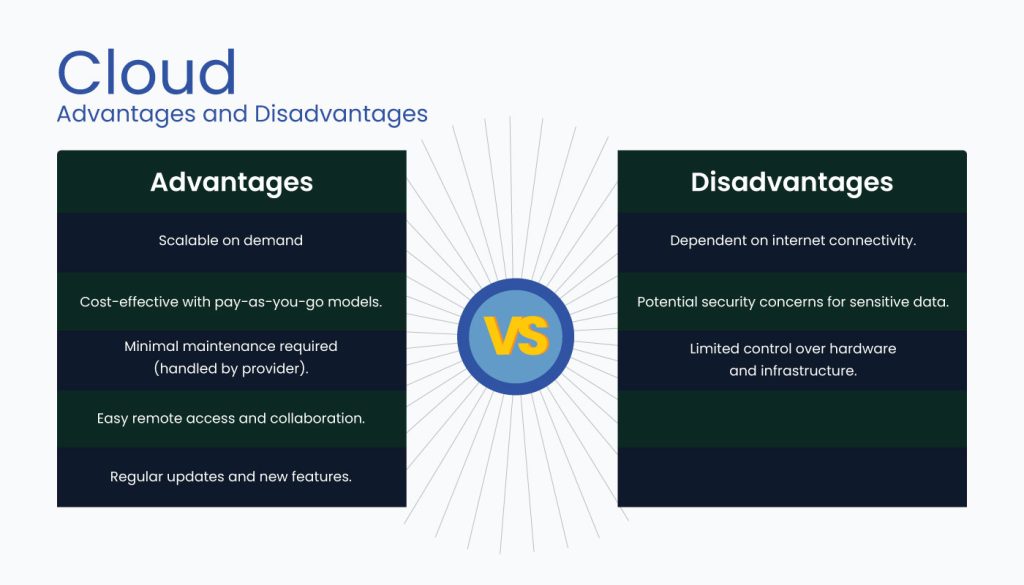
On-Premises Advantages
- Complete control over infrastructure
- Customization possibilities
- Potentially better performance for local applications
- No reliance on internet connectivity for internal operations
On-Premises Disadvantages
- High upfront costs
- Maintenance and upgrade responsibilities
- Limited scalability
- Potential for resource underutilization
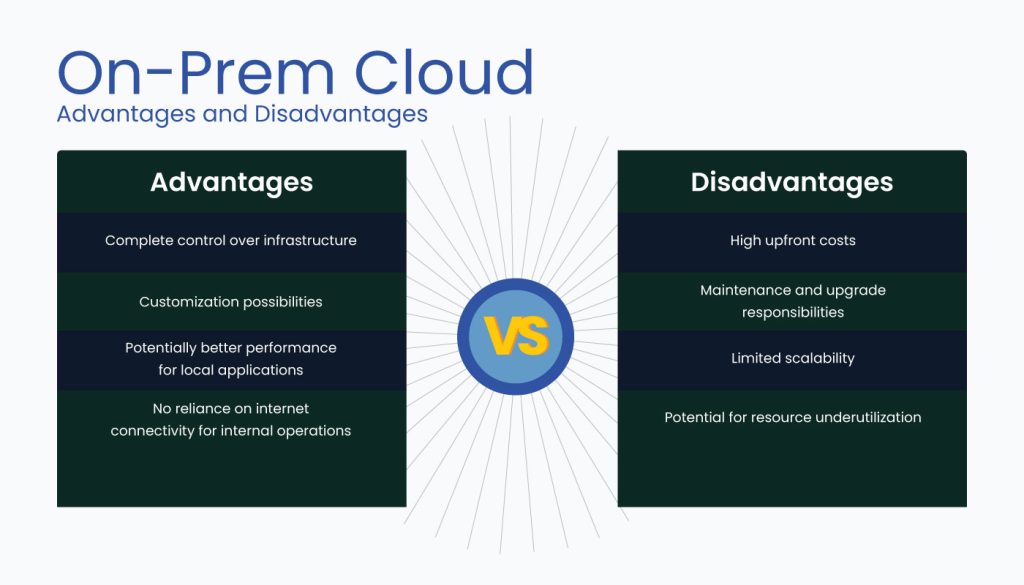
Making the Right Choice for Your Organization
Choosing between cloud and on-premises solutions isn’t a one-size-fits-all decision. Here are some steps to help you make the right choice:
- Assess Your Current Infrastructure: Evaluate your existing IT setup, including hardware, software, and networking components.
- Identify Your Needs: Determine your organization’s specific requirements in terms of performance, security, compliance, and scalability.
- Consider Your Budget: Analyze both short-term and long-term costs associated with each option.
- Evaluate Your In-House Expertise: Assess your team’s ability to manage and maintain on-premises infrastructure versus cloud solutions.
- Think Long-Term: Consider your organization’s growth plans and how each option aligns with your future goals.
- Test and Pilot: If possible, run small-scale tests or pilot projects to evaluate the performance and suitability of cloud solutions for your specific use cases.
- Consider a Hybrid Approach: Don’t forget that you can combine cloud and on-premises solutions to create a hybrid infrastructure that leverages the strengths of both approaches.
Conclusion
The debate between is cloud best choice vs on prem cloud solutions continues to evolve as technology advances and business needs change. While cloud computing offers significant advantages in terms of scalability, cost-effectiveness, and reduced maintenance burden, on-premises solutions still have their place, particularly for organizations with specific cloud computing security, compliance, or customization requirements.
Ultimately, the best choice depends on your organization’s unique circumstances, goals, and constraints. By carefully evaluating the factors we’ve discussed and considering real-world scenarios, you can make an informed decision that sets your organization up for success in the digital age.
Remember, the cloud vs on-premises decision isn’t necessarily an all-or-nothing choice. Many organizations find success with hybrid approaches that combine the best of both worlds. As you navigate this decision-making process, stay flexible and open to adjusting your strategy as your needs evolve.
“The key to success in IT infrastructure is not just choosing between cloud and on-premises, but finding the right balance that enables your organization to innovate, grow, and thrive in an ever-changing technological landscape, especially when considering is cloud best choice vs on prem cloud..”
If you’re looking for services like Hosted Call Center Service, deciding between Dedicated Host vs Dedicated Instance, or exploring Private Cloud solutions and understanding What is a Private Cloud?, get in touch with our experts today. We’re here to help you find the perfect solution for your business needs!


